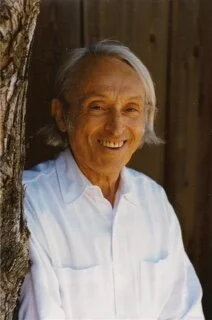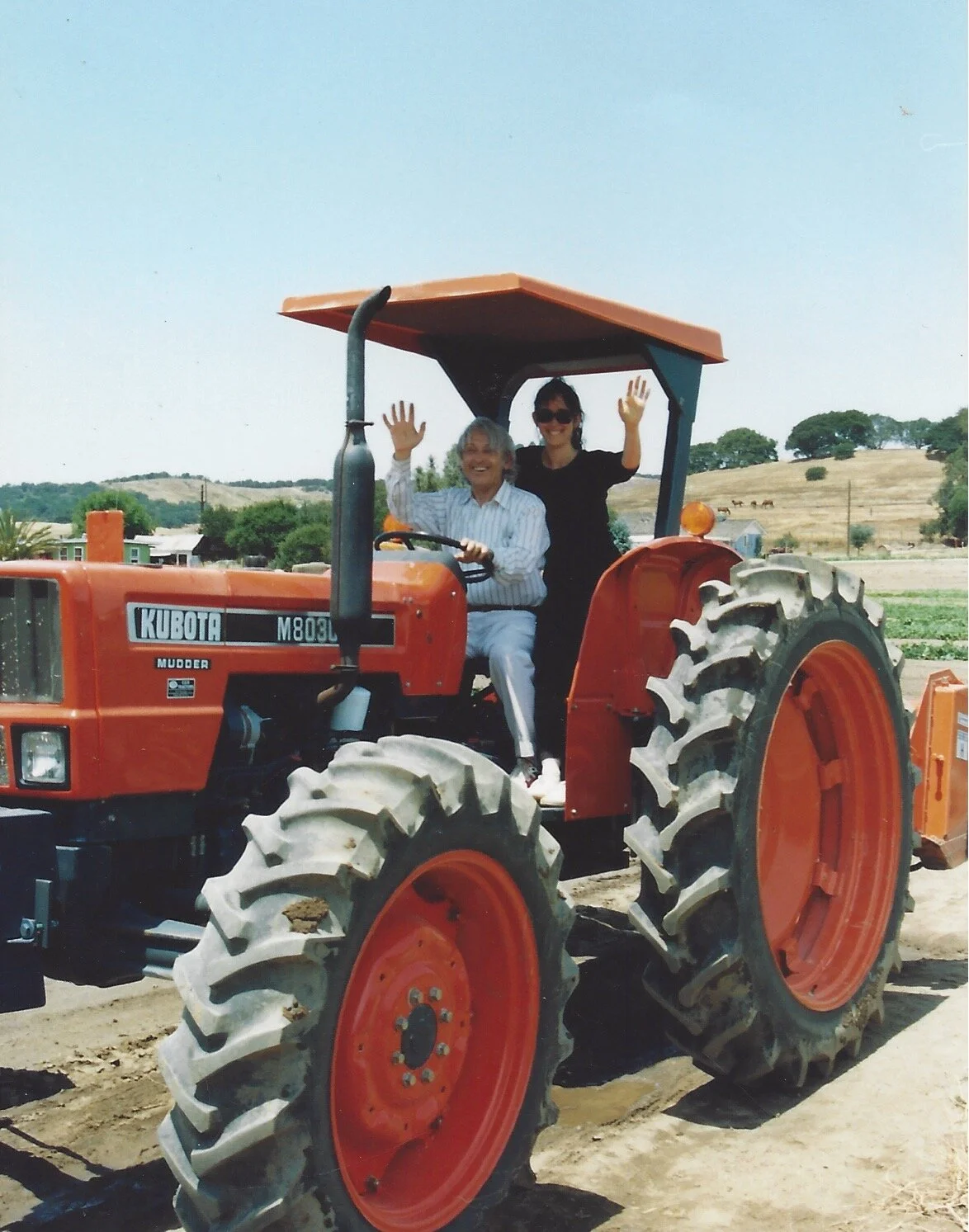Choose to Let Go of Suffering
Lessons From My Father
I wouldn’t be surprised if the title of this blog—Choose to Let Go of Suffering—triggers some people, mostly because this statement used to trigger me. Suffering is everywhere. Nobody wants to suffer. How can we simply choose to let go of it?
When I was a Zen student, the difference between pain and suffering was a recurrent topic of discussion. Pain was defined as a physical or emotional sensation experienced in present time, while suffering was described as an add-on—what happens when our thoughts get overly involved.
Artwork by Mendek Rubin
Perhaps we’re trapped in the past, agonizing about what we could have done to avoid this terrible situation. Or maybe we’re anxious about the future, fearing that our pain will never go away as we imagine various intolerable scenarios. It’s also possible to suffer when things are going splendidly—by worrying about what we’ll do if this person or situation we love and depend on and is suddenly taken away. The truth is that we can never avoid experiencing pain, but we do have the ability to reduce how much we suffer.
I recently attended a five-day workshop about trauma led by one of the world’s foremost trauma researchers, Bessel Van Der Kolk, MD. In his opening lecture, he talked about how people who have been traumatized tend to merge with the traumatic event. It becomes their primary identity, the main thing that defines them. His goal in therapy is to get patients to live fully in the present and develop the ability to view the traumatic event as part of their history—a terrible experience that happened to them in the past, but is over now.
So much of my father’s healing journey was to stop defining himself as a Holocaust survivor, with all the accompanying agony, rage and guilt. Holding on to that identity meant holding onto a vast darkness that was not only emotionally painful, but also physically and spiritually depleting. He knew he would never be able to fulfill his own destiny until he found a way to move forward .
My father said that breaking the habit of living in perpetual suffering was extremely difficult because he had actually become addicted to his misery. “Suffering added drama to my life, filled my conversations, and kept me occupied day and night. My mind even invented problems where none existed…Contentment was nowhere to be found.” He went through many steps in his quest to eliminate his suffering: facing his past, allowing his repressed emotions to surface, creating exercises to help reprogram his thought patterns and retrain himself to feel happy and peaceful, and fostering boundless self-love. But the prelude to all of this was his deep commitment to let go of his suffering and move towards joy and love—the eternal sunshine.
The immense amount of anguish in this world can feel overwhelming. At the trauma workshop, I cried as if my heart was breaking while people shared their horrific stories of cruelty and loss. Yet, I also witnessed the deep healing that came from fostering safety, connection and love. It was an incredibly moving experience. Just as my father healed from the horrific experiences of the Holocaust to live a truly happy and peaceful life, the potential exists for all of us.
Through his hard work, my father was able to achieve the type of healing Dr. Van Der Kolk described. Yes, my dad was victimized, but he was able to make the decision to stop living his life identifying as a victim. He chose to let go of his suffering—to write a new script.
“When I look at the world through the eyes of the past, I am miserable,” my father wrote, “But when I live in the now, unhappiness doesn’t exist, because I’m not keeping it alive inside of me. It’s not that I deny the past. I just don’t live in it.”
Sneak Peek at Mendek’s Poetry
Mendek wrote many poems that encapsulated his revelations, and a selection is shared in Quest for Eternal Sunshine. Here’s one that relates to this week’s theme of choosing to let go of suffering, and how difficult it can be. This poem helps illustrate how living in the present moment is a powerful and essential step to healing. Read the poem
“Quest for Eternal Sunshine—A Holocaust Survivor’s Journey from Darkness to Light” is the story of Mendek Rubin, a brilliant inventor who endured three horrendous years in Nazi slave labor concentration camps while most of his family was murdered in Auschwitz. Mendek eventually turned his genius on his own psyche, figuring out innovative ways to heal from his enormous traumas to live a joyous and peaceful life. The book—a posthumous collaboration between Mendek and his daughter, Myra Goodman—is based on an unfinished manuscript Myra discovered after her father’s death.
Mendek was an extremely curious, imaginative, and inventive person from the time he was a young boy. At only seven, he devised a key that could open any lock. His family owned a hardware store in their small town of Jaworzno, Poland, and if someone accidentally locked themselves out of their home, Mendek was the one sent to open the door.
Just like the universal key he’d invented as a child, Mendek discovered the keys to freeing himself from the psychological prison he’d been trapped in for decades to find his way back to love. In this “Keys to Happiness” series, Myra shares some of the important lessons she is continuing to learn from her father every day.











